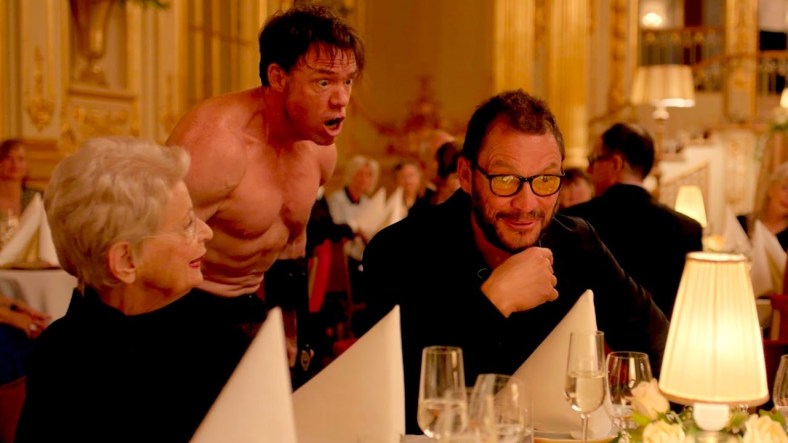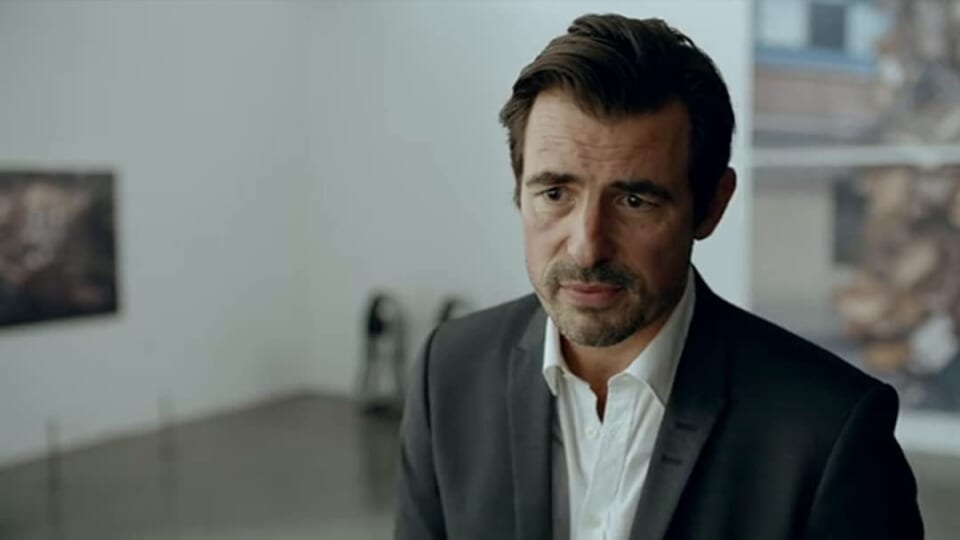Why ‘The Square’ Is The Best Horror Film About Art

Horror films are an art, and sometimes the subject of art itself makes for a good horror film. The art world is a place teeming with terror-ific possibilities. It’s a setting where the characters are materialistic, cold, and memorable in their quirks—their thick-rimmed glasses and designer scarves, their strange names and slouched postures as they size up a piece.
2019’s Velvet Buzzsaw is filled to the brim with these characters—art critics and gallery owners, young artists waxing poetic about their values and old artists withdrawn from an industry that eats itself—played by an an all-star cast including Jake Gyllenhaal, Rene Russo, Toni Collette, John Malkovich, Zawe Ashton, and Stranger Things’ Natalia Dyer.
“What’s the point of art if nobody sees it?”
Velvet Buzzsaw
After the death of her neighbor Vetril Dease, Josefina, a gallery assistant gunning for her own fame, discovers a treasure trove of his never-before-seen paintings. Dease’s last wishes dictate that his paintings be destroyed, but Josefina steals them. When the paintings are displayed and advertised as extremely rare, the art world vies for ownership of Dease’s work in a game to buy, steal, and swindle its way to the pieces—and strange deaths begin to take out the players one by one.

In Velvet Buzzsaw, death is a punishment for “the violation of inviolate rules.” Characters find themselves at the mercy of the art they seek to exploit—paintings that literally capture their audience, graffiti that absorbs and displays bodies, a rival gallery owner strangled by his own pretentious scarf.
Two death scenes are of particular importance. An art curator’s arm is ripped off by a sculpture that dares gallery-goers to reach inside. When she is found the next morning, her body and the pool of blood in which it lay are mistaken as part of the exhibit. A critic is driven mad by the haunting of a dishonest review he penned. As he seeks to fight, or assuage, the power of Dease’s art, he is killed by a sculpture called Hoboman as it asks, “Have you ever felt invisible?”
The ending of Velvet Buzzsaw finds Dease’s work, which had been priced at millions of dollars, being sold off by a street vendor for $5 a piece. The end credits roll over an older, jaded artist as he draws large spirals in the sand with a stick, which are washed away by the rising tide.
Velvet Buzzsaw leaves no doubt about what it is trying to achieve. It’s a straight horror film fitted with caricatures of art world inhabitants that make it a hilarious watch for viewers in on the joke. It’s over-the-top in the way it pokes fun and isn’t serious enough to reveal the true insidiousness in the art world.
In contrast, Ruben Östlund’s 2017 satire The Square exquisitely captures the worst of the real world. Accused by critics of being heavy-handed, anyone who has operated within the art world knows it is only placing a magnifying glass over the sublime horrors that already exist there. The only problem for regular horror hounds might be the fact that it is not a horror movie.
Or is it?
In Art History, there is a Latin term that, loosely translated, means “fear of empty spaces.” In art, horror vacui is conceptually a reason to fill an entire canvas. It’s been explored endlessly in modern art, perhaps most directly by Mexican artist Alejandro Alamanza Pereda, where he constructed classical landscapes and encased them in concrete against a blood-red wall.

Beyond the violence, attempted rape, and suspense of The Square, its horrors strike most sharply in its emptiness and its main character’s struggle to fill his own vacuous presence with some kind of meaning. Christian, played by The Northman‘s most overlooked cast member Claes Bang, is the director of the fictional X-Royal Museum, hosted in a former Swedish palace. The story takes place as the museum prepares to host an art piece called The Square, a simple shape outlined on the floor in which attendees are encouraged to stand. As long as they occupy The Square, they are beholden to help anyone in need, whether it be with a meal or a warm place to sleep.
The Square is a sanctuary of trust and caring. Within its boundaries, we all share equal rights and obligations.
Placard featured outside The Square
The Square excels where Velvet Buzzsaw fails—in the building of unbearable tension—and the mundanity of the story makes the impact all the more dreadful. While the narrative may seem meandering at times, transitioning between Christian’s work at the museum and his search for human connection (and his pick-pocketed belongings, a scene that is the catalyst for all that follows), the horror at the heart of the story is the conflict between classes. Indeed, the idea that visual art is somehow a universal expression of human truths (reinforced by The Square as an art piece’s thesis itself) is inherently flawed, and often harmful. It’s likely why naturally privileged populations were able to create and display art more often than others, and why they still dominate the art world.
Transitions between the museum scenes are bridged by footage of Sweden’s houseless population, a stark contrast of opulence and destitution. Christian as a character represents this privilege of opulence. His self-congratulatory belief that he is a good person contends with his fear and distrust of the poor. It is Christian’s own fear that draws the audience into the film’s horrors. In one scene, Christian goes home with a writer, Anne (Elizabeth Moss), who had interviewed him earlier in the day. Anne lives in a dimly-lit apartment with stained bedding and walls, far from the luxury of Christian’s Tesla. After they have sex, Anne offers to throw the condom away. But Christian will not let go of it, fearing that Anne, as someone in a lower social class, plans to impregnate herself with his sperm and extort him for money.
While the scene is impossible not to laugh at, the tension between the two characters and the terror in Christian’s eyes, as if Anne is the monster from under his bed, makes it more than awkward. It’s unsettling. Indeed, Anne as Christian’s monster makes sense. Her cohabitant is a literal chimpanzee, which is shown walking through the hall of her apartment with no explanation. The chimp is less-than-human, a substitute for how Christian views the lower class. In this scene, the chimp is Anne’s shadow.
In a genre that is trending more and more toward explorations of masculinity and its darker aspects, The Square hits the strongest presences in the art world seen to date. Christian acts as both victim and monstrosity, a product of his surroundings and the society that has encouraged him to thrive. In the definitive horror scene of the film, a crowd of the museum’s donors enjoys an elegant gala dinner. Dressed in designer clothes, complete with photographers and a grand ballroom where the walls and trimming seem to drip gold and marble, a performance artist enters on crutches that allow him to walk like an ape. He growls, hoots, and intimidates the audience, running one man out of the room and attempting to assault a young woman after pushing her to the ground.
“You can hide in the herd, safe in the knowledge that someone else will be the prey.”
Loudspeaker announcement during The Ape Man performance
Many (white male) legacies are defined beyond their art production into urban legends about the masculine prowess, interpreted into sexual and physical actions that have ostensibly nothing to do with their creative process. The idea that this primal masculinity includes sexual assault is important, and a reflection on the artist and the act of art creation.
More than just art going too far, this is a commentary on the ability of the privileged few to get away with anything so long as it is masked under the guise of art, and even though Christian fears poor people and what he believes to be their inclination toward violence, he is also part of a system that perpetuates it. In the end, gala-goers in their three-piece suits fall upon the performance artist to wrest him away from the young woman as they beat him. The scene cuts away, leaving the audience wondering if he survives or if he is beaten to death on the floor.
In the end, Velvet Buzzsaw and The Square are both very different films, arguably in different genres. But when it comes to depicting the art world’s horrors, The Square pulls the tension taut and does not let go. If Velvet Buzzsaw is art world horror’s Bozo the Clown, then The Square is its Pagliacci.
Categorized:Editorials News

